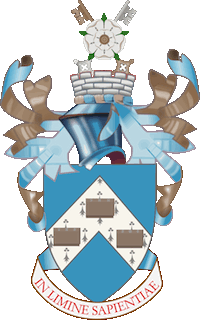Last updated: 22/08/2015
Recent news in York
22/08/2015 This page launched.
University of York in Tohoku-York-Kaiserslautern Core-to-Core Project on
"New-Concept Spintronics Devices"

The University of York (informally York University), is a research-intensive plate glass university located in the city of York, England. Established in 1963, the campus university has expanded to more than thirty departments and centres, covering a wide range of subjects. York has been named the 7th best university under 50 years old in the world (and 1st within the UK), building a "reputation to rival Oxford and Cambridge". The Magnetic Materials Research Group in the Physics and Electronics Departments at UoY is probably Britain's largest group working in the field of advanced nano-magnetism. The group has specialised in the field of spintronics, magnetic modelling and magnetisation reversal studies in complex materials. The Spintronics and Nanodevice Lab in the Department of Electronics at UoY investigate novel materials, new devices and fabrication techniques for spintronics - a rapidly expanding field of microelectronics and nanoelectronics.
The University of York (UoY) has two distinct bodies of expertise in this field: (a) magnetic thin films and magnetic measurements and (b) spin electronic materials. UoY will focus on the optical gate operation in a ferromagnet/semiconductor hybrid devices and will undertake structural analysis using world leading high resolution TEM in the York JEOL Nanocentre. UoY will also be deeply involved in the transport measurement studies and the associated magnetic measurements. UoY will also work on the Heusler-alloy junctions to demonstrate new magnetic properties, such as low damping constant with small magnetic moments, which again involves the above structural and magnetic analysis. In addition, UoY will demonstrate a new magnetisation reversal in a GMR/TMR junction assisted by the spin Seebeck effect.
The Magnetic Materials Research Group in the Physics and Electronics Departments at UoY is probably Britain's largest group working in the field of advanced nano-magnetism. The group has specialised in the field of spintronics, magnetic modelling and magnetisation reversal studies in complex materials.
The group specialises in magnetisation reversal studies and has the best suite of magnetic measurement facilities in Western Europe including a state-of-the-art ADE Model 10 vibrating sample magnetometer (VSM) and a pure DC focused MOKE. Historically the group has specialised in reversal processes in recording media with notable achievements including the development of the Delta M technique and leading work in the field of magnetisation reversal in perpendicular media and composite media.
Most recently the group has specialised in studies of the stability of EB systems for recording heads and MRAM type devices. Significant advances have been made in terms of measurement protocols and data interpretation which had led to significant industrial support from Seagate and Western Digital. This work has led to a major paradigm shift in the understanding of EB materials.
With the advent of the York JEOL Nanocentre, where we have access to the double CS corrected HR-TEM, the emphasis of the group's work is now shifting to small elements and nano-scale devices. Support for this project will be provided by studies of magnetisation reversal and where appropriate sputter deposition of thin films. We have a new ultrahigh vacuum molecular-beam epitaxy and sputtering system for the thin film growth of this project. We also have 25% usage of the world leading electron-beam lithography in Leeds for nano-patterning.
The Spintronics and Nanodevice Lab in the Department of Electronics at UoY investigate novel materials, new devices and fabrication techniques for spintronics - a rapidly expanding field of microelectronics and nanoelectronics.
One major focus is on fabricating a spintronic three-terminal operator by investigating two major subjects: manipulation of a spin-polarised electron current in non-magnetic semiconductor/metal and realisation of perfect spin polarisation in a Heusler alloy film, both of which require nano-fabrication.
